There are over 200 recognised breeds of chicken around the World but not all hens are equal in their laying ability so if you would like chickens for eggs, look at my top 10 laying hens below first. It is commonly accepted that all chickens decended from the Jungle Fowl. Pure breeds of chicken have been developed over many hundreds, even thousands of years from the Jungle Fowl (although science is still challenged by the Auraucana that lays blue eggs).
A Little History of Laying Hens
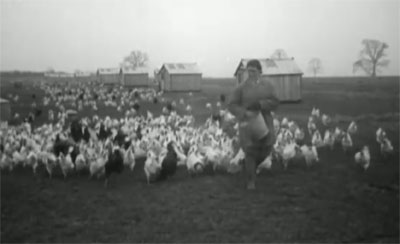 Before the First World War, ducks were the better egg layers and chicken breeds that layed 100 eggs or more per year were considered good layers. Most of the development of pure bred laying hens came after the Second World War when there were many laying trials and tests and it was common for breeders to ‘trap nest’ hens to record their individual output so that they could be used to produce further generations of laying hens.
Before the First World War, ducks were the better egg layers and chicken breeds that layed 100 eggs or more per year were considered good layers. Most of the development of pure bred laying hens came after the Second World War when there were many laying trials and tests and it was common for breeders to ‘trap nest’ hens to record their individual output so that they could be used to produce further generations of laying hens.
Development of the ‘Hybrid’
The developments with pure breeds were soon to be followed by hybrid (a cross of pure breeds) laying hens. There were millions of pounds spent during the 1950’s on creating hybrids that were not only capable of laying more eggs but also had a good feed conversion.
During this development, the parent flocks that created these hybrid layers were becoming a different ‘strain’ of their own because hens were selected for egg production rather than the way they looked.
Interestingly, duck eggs could have been on our breakfast table rather than chickens eggs… but they did not do well kept in confined conditions like chickens.
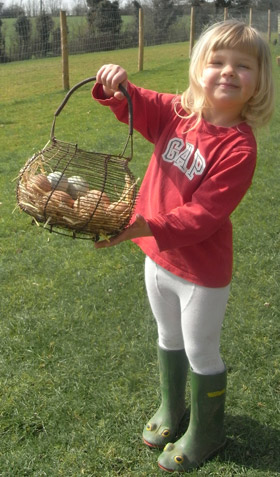 My Top 10 Chickens for Eggs
My Top 10 Chickens for Eggs
The following table lists my top 10 laying hens (a mixture of hybrids and pure breeds) and gives an estimate of the number of eggs they are capable of producing if kept in the right conditions.
Note that there are many different strains of hens from different breeders that will perform differently… egg numbers can vary on a number of other factors too, particularly with feeding and daylight levels.
Exhibition strains that have been closely bred are not usually selected for their egg laying performance. Try to purchase hens from a good ‘Utility Strain’. There are some breeders that advertise utility strains and the number of eggs they expect from their strain every year.
Hybrids are much more reliable at producing a given number of eggs and are bred mainly for this purpose.
1. Goldline (Hybrid)
The ultimate egg machine. This little commercial brown hen will lay up to 320 large brown eggs in her first year. They have a good feed ratio and are very similar to the birds used on farms to produce eggs for the consumer market. A very friendly bird that will be in your house if the door is left open!
2. White Leghorn (Pure Breed)
Small attractive birds with a good feed efficiency that lay up to 300 large white eggs in their first year. These are the standard commercial hen used in the U.S. for egg production (because white eggs are preferred). They can be quite flighty and can fly well so make sure they can be kept securely before you buy them or clip a wing to keep them on the ground.
3. Nera (Hybrid)
Hardy birds that are great foragers and layers of a good quality large brown egg. The Nera is a cross between a certain strains of Rhode Island Red and Barred Plymouth Rock, originating in Scotland. You can expect around 270 eggs in their first year.
4. Amber (Hybrid)
The Amber is a Rhode Island Red based hybrid that looks attractive and has very soft feathering. She is a fantastic layer of up to 300 medium eggs in her first year.
5. Speckledy (Hybrid)
The Speckledy is a flecked dark hen, a cross of a Rhode Island Red and Marans. She lays around 270 large dark brown eggs in her first year.
6. Rhode Island Red (Pure Breed)
The Rhode Island Red is a good layer of up to 220 large brown eggs in their first year. Be sure to get a utility strain though as these are a popular show bird.
7. Marans (Pure Breed)
Good layers of medium to large dark brown eggs. Copper Black Marans seem to be the best layers laying up to 200 eggs in a year. They are often good winter layers, with pullets coming into lay during January.
8. Light Sussex (Pure Breed)
Attractive birds that will reward you with up to 200 medium tinted eggs.
9. Araucana (Pure Breed)
Araucanas are very unique looking. They initially came from Chile in South America. The Araucana lays around 200 medium sized blue to bluish-green
10. Crested Cream Legbar (Pure Breed)
An attractive hen with a small crest that will lay up to 180 medium sized blue to bluish-green eggs that will add a little colour to your egg boxes.

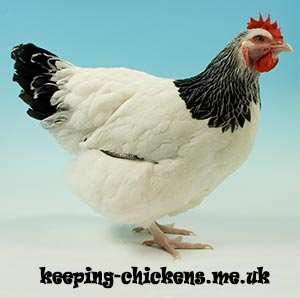

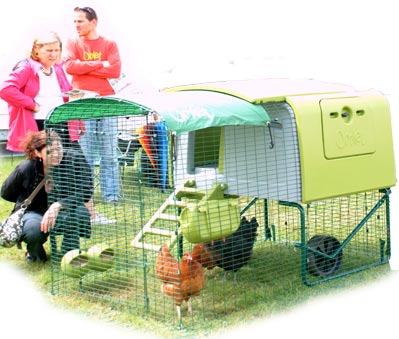
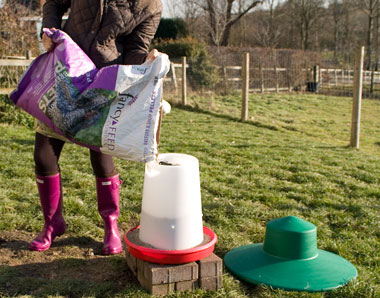

I had a broody Speckled sussex early this year, so rather than “break” her, we decided to use her to hatch eggs, instead of the incubator! Our other speckled sussex has recently become broody, so during the day, we just lock her out of the coop. Its been a week now, and she is back to normal!
hi can you help me i was give in a hen with a chick at her side what i need to no is when do i let her and baby lose with my othire hens as i have not a clue how old the baby is i got them in the same pen but kept in a big cage thanks
You need to keep them separated until the chick is a similar size to the hen or she will get bullied. She will also need chick crumb and then growers pellets to grow correctly and your other hens should be getting laters pellets.
HI my light sussex has gone broody just over a week now, i have to pick her up and put her out side other wise she wont eat, how can I stop her going in the nest boxs if the other ones need to go in there.
Hi me again, you say to put a broody hen in a cage, how big should the cage be, and sholud she be let out with the others in the day,
Whatever you have, providing she can move around and get her food and water. Only keep her in there for a few days until she is no longer broody. Put her back in the coop at night to roost with the others but make sure she doesn’t go into the nest box (move her in the dark and she shouldnt be able to).
Hi, not sure if I’m posting this in the right place, but here goes: I live in Bulgaria now (Brit ex-pat) and my tumbledown old house in a Village has a large garden, as is normal here. I want to get a few chickens to compliment what is virtually a small holding and I’d like to know the best breed to get, considering the extremes of temperatures during the year, down to minus 30 in the Winter and up to 40 degrees in the Summer. I want a breed that produces large brown eggs and lots of them, and I was wondering whether the Nera would be a good choice, and even whether they are available over here. I know I’ll need a secure place for them, not just the Foxes, but potentially against wild dogs, wolves, snakes or even bear….it is very rural and remote here. Any advice would be great…thanks.
I’m not really familiar with Bulgaria so don’t know where you can get chickens or what breeds. I would try to find some local chicken keepers and see what they have and what they do… Most breeds will be fine in the cold (many Canadians keep chickens at these temperatures) but it is hard work keeping drinking water heated!
The coops should be draught free but chickens should be able to fluff themselves up to insulate during extreme cold weather.